So, you’ve got a million things on your plate and downloading bank statements should be the least of your worries, right? But let’s be honest, those tedious tasks often end up being the ones that trip us up. The good news is, there’s a simpler way to handle it.
Imagine getting through tax season without pulling your hair out. Or effortlessly tracking your business expenses without having a meltdown at your desk. Sounds like a dream? It’s totally doable.
In this post, we’ll dive into the best practices for streamlining your bank statement downloads, minimizing the hassle, and maximizing efficiency. Say goodbye to your financial download drama.
Understanding the Importance of Bank Statement Downloads
First things first, why should you care about downloading your bank statements? Think of your bank statement as the Swiss Army knife of your financial toolkit. It’s not just a record of transactions; it’s a goldmine of information.
Maintaining these records can save you a world of trouble—especially during tax season. Need to prove an expense? Your statements have got your back. Dreading an audit? Those downloads will be your best defense.
Plus, keeping an eye on your statements helps you spot any sneaky unauthorized transactions. You work hard for your money—don’t let it slip through the cracks.
In essence, regular downloads keep your financial house in order and make those “uh-oh” moments a lot less frequent. Trust us, future you will thank you for the foresight.
Choosing the Right Format for Downloading Bank Statements
Now that we’ve established why bank statements are your financial BFF, let’s talk formats. You might think, “Does the format even matter?” Spoiler alert: It does.
PDFs are the crowd favorite. They’re universally readable and hard to tamper with, making them ideal for official documentation. On the flip side, if you’re a data ninja, go for CSV. These files are spreadsheet-ready, perfect for number crunching and analysis.
Then there’s good ol’ Quicken or QuickBooks format. If you’re using financial software, these formats will sync seamlessly, shaving hours off your bookkeeping tasks. OCR or text versions are available, but they’re more of a last resort—think of them as the unsung heroes for when you need plain text.
Choosing the right format is all about balancing ease of use with what you plan to do with the data. Make your life easier now, and future you will be doing a happy dance.
Step-by-Step Guide to Downloading Bank Statements
Ready to get those bank statements like a pro? Let’s dive in.
First off, log into your online banking portal. You know the drill—username, password, maybe even that annoying yet secure two-step verification. Once you’re in, navigate to the section labeled “Statements” or “Documents.” Every bank has a slightly different layout, so don’t be afraid to poke around.
Choose Your Date Range
Next, pick the statement period you need. Some banks allow you to customize the date range, while others offer monthly or quarterly snapshots. Select the appropriate one for your needs.
Now it’s decision time: format. Refer back to our chat on formats above. Got it? Good. Choose your preferred format—whether it’s PDF for safekeeping or CSV for data analysis.
Download and Organize
Finally, click that glorious “Download” button. Your file should begin downloading instantly. Pro tip: Save it in a dedicated folder on your computer. A little organization goes a long way, especially when tax season rears its ugly head.
That’s it! You’ve just leveled up in personal finance management. Happy downloading!
Organizing and Storing Downloaded Bank Statements Efficiently
So, you’ve got your bank statements downloaded. Now what? Let’s talk organization.
Create a Dedicated Folder
First, create a dedicated folder on your computer. Name it something obvious like “Bank Statements” or “Financial Records.” This isn’t the time to get creative; clarity is key.
Subfolders by Year and Month
Inside that main folder, create subfolders by year. Within each year, create monthly subfolders. It may seem excessive now, but trust me—your future self will thank you when you’re hunting for that elusive June 2022 statement.
Consistent Naming Conventions
Name your files consistently. Try something like “BankName_MMYYYY.pdf” or “BankName_MMYYYY.csv.” This ensures that even at a glance, you know what each file contains.
Backup, Backup, Backup
Finally, don’t forget to back up these files. Use a cloud service like Google Drive or Dropbox, or even an external hard drive. It’s an extra step, sure, but you’ll appreciate it if your computer ever decides to take an unscheduled nap.
Congratulations! You’ve just become a bank statement organizational ninja. Now go forth and conquer your financial empire!
Ensuring Security and Privacy of Downloaded Bank Statements
Alright, let’s get real about security and privacy. Your downloaded bank statements are a goldmine for fraudsters—guard them like they’re the last cup of coffee at a Monday morning meeting.
First off, use strong, unique passwords for your financial accounts and folders. None of this “password123” nonsense. Aim for a mix of letters, numbers, and symbols—a little something only you can remember.
Second, keep your antivirus software up to date. It’s your first line of defense against malware that could sneakily swipe your sensitive information. Plus, regular updates keep those pesky cyber intruders at bay.
Next, enable two-factor authentication (2FA). It’s an extra step, but it makes your data significantly harder to access. Think of it as the bouncer at the door of your personal information club.
Avoid accessing your financial records on public Wi-Fi. Hackers love unsecured networks, and they’re watching. If you must use public Wi-Fi, consider a virtual private network (VPN) to encrypt your data.
Finally, consider encrypting your bank statements. There are plenty of tools out there that make encryption straightforward—even if tech isn’t your thing. It’s like turning your files into Fort Knox.
Secure those statements, and you’ll sleep easier knowing your financial data is locked up tighter than a drum.
Key Features to Look for in a Bank Statement Download Tool
Choosing the right bank statement download tool can feel more complicated than assembling IKEA furniture without instructions. But fear not, here’s what you need to look for.
First up, user-friendliness. If you need an advanced degree in computer science to navigate it, keep shopping. Intuitive design is crucial. You should be able to download statements without wanting to smash your mouse in frustration.
Next, multi-bank compatibility. Your tool should work with multiple financial institutions. Because let’s face it, most of us have accounts spread out like confetti at a parade.
Automated downloads are a big win. Look for tools that automatically fetch your statements. It’s like having a personal assistant, but without the awkward small talk.
Security should be a top priority. You need rock-solid encryption and compliance with industry standards. Anything less is like inviting cyber thieves to a party with your financial details as the guest of honor.
Customizable data extraction is another plus. Whether you need CSV, PDF, or some obscure format that only your accountant understands, versatility matters.
Lastly, check for robust customer support. When things go sideways at 3 a.m. before a big financial review, you want a tool with a responsive support team—not a ghost town.
Pick a tool with these features, and you’ll handle your bank statements like a pro, minus the headache.
Conclusion: Simplifying Your Financial Management with Effective Bank Statement Downloads
In wrapping up, it’s clear that efficient bank statement downloads can be a game-changer for managing your finances. By choosing the right tool, you can dodge the tedious tasks and dive straight into meaningful financial analysis.
Remember, a user-friendly interface is your best friend here. Pair that with the ability to work with multiple banks and automated downloads, and you’ve got yourself a winner. Security can’t be a footnote in this conversation—ensure your chosen tool has top-notch protection for your data.
Also, customizable data extraction can make your life a lot easier, helping you get the exact format you need without jumping through hoops. And let’s not forget the importance of solid customer support. When the going gets tough, you want someone reliable to help you out.
By prioritizing these features, you’ll find yourself less bogged down by administrative drudgery and more focused on what truly matters—growing your business and making informed financial decisions.
Ultimately, the right bank statement download tool will not only streamline your processes but also give you peace of mind. So take the plunge and simplify your financial management today. Your future self will thank you.







